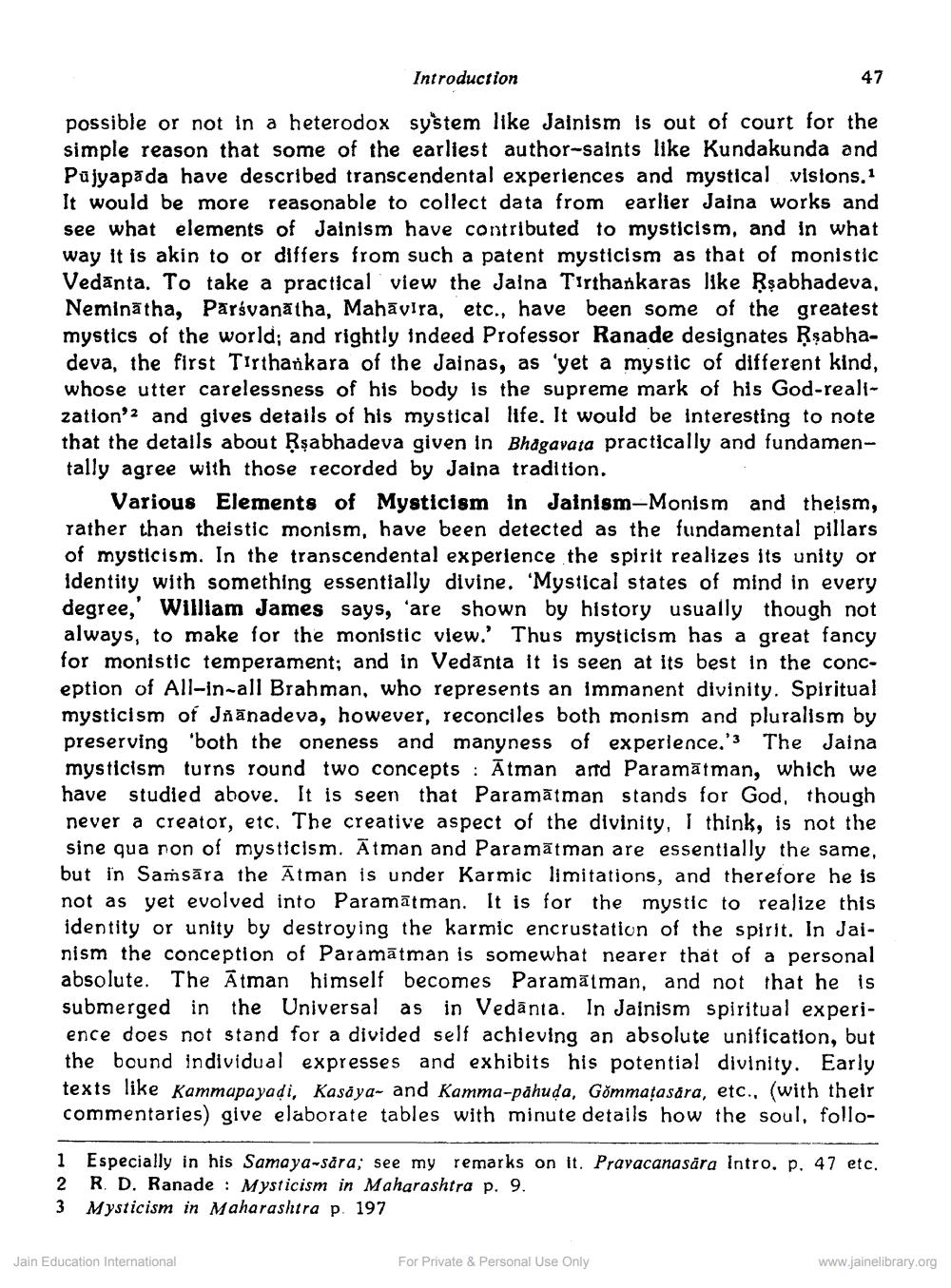________________
Introduction
47
possible or not in a heterodox system like Jainism is out of court for the simple reason that some of the earliest author-saints like Kundakunda and Pujyapada have described transcendental experiences and mystical visions, 1 It would be more reasonable to collect data from earlier Jaina works and see what elements of Jainism have contributed to mysticism, and in what way it is akin to or differs from such a patent mysticism as that of monistic Vedānta. To take a practical view the Jaina Tirthankaras like Rşabhadeva, Neminātha, Parávanátha, Mahāvira, etc., have been some of the greatest mystics of the world; and rightly indeed Professor Ranade designates Rsabhadeva, the first Tirthankara of the Jainas, as 'yet a mystic of different kind, whose utter carelessness of his body is the supreme mark of his God-realization'? and gives details of his mystical life. It would be interesting to note that the details about Rşabhadeva given in Bhagavata practically and fundamentally agree with those recorded by Jaina tradition.
Various Elements of Mysticism in Jainism-Monism and theism, rather than theistic monism, have been detected as the fundamental pillars of mysticism. In the transcendental experience the spirit realizes its unity or identity with something essentially divine. 'Mystical states of mind in every degree,' William James says, are shown by history usually though not always, to make for the monistic view.' Thus mysticism has a great fancy for monistic temperament; and in Vedānta it is seen at its best in the conception of All-in-all Brahman, who represents an immanent divinity. Spiritual mysticism of Jäānadeva, however, reconciles both monism and pluralism by preserving 'both the oneness and manyness of experience.'3 The Jaina mysticism turns round two concepts : Ātman and Paramātman, which we have studied above. It is seen that Paramātman stands for God, though never a creator, etc. The creative aspect of the divinity, I think, is not the sine qua non of mysticism. Ātman and Paramātman are essentially the same, but în Saṁsāra the Ātman is under Karmic limitations, and therefore he is not as yet evolved into Paramātman. It is for the mystic to realize this identity or unity by destroying the karmic encrustation of the spirit. In Jainism the conception of Paramātman is somewhat nearer that of a personal absolute. The Ātman himself becomes Paramātman, and not that he is submerged in the Universal as in Vedānta. In Jainism spiritual experience does not stand for a divided self achieving an absolute unification, but the bound individual expresses and exhibits his potential divinity. Early texts like Kammapayadi, Kasaya- and Kamma-pähuda, Gõmmatasara, etc., (with their commentaries) give elaborate tables with minute details how the soul, follo
1 Especially in his Samaya-sära; see my remarks on it. Pravacanasära Intro. p. 47 etc. 2 R. D. Ranade : Mysticism in Maharashtra p. 9. 3 Mysticism in Maharashtra p. 197
Jain Education International
For Private & Personal Use Only
www.jainelibrary.org




